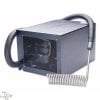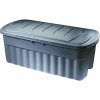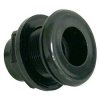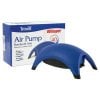crotch monger
Active Member
Introduction:
First off, limitless thanks goes out to Heath Robinson for the inspiration on this grow. Any credit or congratulations goes solely to him for designing this amazing system, for graciously offering up this golden information and taking the time to instruct others on how to capitalize on its capabilities. Having studied (and drooled over) his threads on the now-defunct HG420 site, I, like many others, have been in awe of the man's ability to get 4 lbs.+ out of his Vertical Bush/Tree-style grows. I am only taking his design and trying to replicated his results. Many of his old grows are still catalogued over at http://www.strainguide.org/grow-archives-2. These include the original HG420 threads for the Aquafarm Mods and some great threads by other growers.
Certainly grower's skill and superb genetics are among the key elements of his success, but most importantly, it would not be possible to maintain healthy plants of this size without the means to provide increased levels of Dissolved Oxygen to a massive root system, which is done by recirculating large volumes of water through the entire system at at rate of roughly 1000 Gallons/ 4000L per hour.
Plant numbers still being an issue where I live, this system affords myself and others with that concern, the ability to run plant numbers in misdemeanor territory (5 or under where I'm at) and still run perpetual harvests with superb yields. You can flower two trees, while simultaneously vegging two new clones and one mother. Just start vegging the new clones 6 weeks prior to harvest and they will be ready to move into the flower room and so on in a cycle.
This will be a DIY journal/tutorial because, unlike Heath, I will not be using modified Aquafarms. Instead, I will show you how to build essentially the same system out things you can mostly pick up at your local big box store, with a few exceptions. This was mainly due to the fact that the containers he uses are only made in the UK and I did not want to pay the extreme shipping cost or bother with the hassle. However, it also benefits anyone stateside interested in using this system as you will also not need to bother with fussing over ordering the expensive version of these tubs. The mechanism is all the same and so, it will make no difference.
I have plenty of pictures to illustrate, but I will gladly take more of anything specific that you might want to see. I will also try to provide a comprehensive parts list, but again, if something doesn't add up, just ask, and I will do my best to answer. So, without anymore rambling, lets start this thing.
First off, limitless thanks goes out to Heath Robinson for the inspiration on this grow. Any credit or congratulations goes solely to him for designing this amazing system, for graciously offering up this golden information and taking the time to instruct others on how to capitalize on its capabilities. Having studied (and drooled over) his threads on the now-defunct HG420 site, I, like many others, have been in awe of the man's ability to get 4 lbs.+ out of his Vertical Bush/Tree-style grows. I am only taking his design and trying to replicated his results. Many of his old grows are still catalogued over at http://www.strainguide.org/grow-archives-2. These include the original HG420 threads for the Aquafarm Mods and some great threads by other growers.
Certainly grower's skill and superb genetics are among the key elements of his success, but most importantly, it would not be possible to maintain healthy plants of this size without the means to provide increased levels of Dissolved Oxygen to a massive root system, which is done by recirculating large volumes of water through the entire system at at rate of roughly 1000 Gallons/ 4000L per hour.
Plant numbers still being an issue where I live, this system affords myself and others with that concern, the ability to run plant numbers in misdemeanor territory (5 or under where I'm at) and still run perpetual harvests with superb yields. You can flower two trees, while simultaneously vegging two new clones and one mother. Just start vegging the new clones 6 weeks prior to harvest and they will be ready to move into the flower room and so on in a cycle.
This will be a DIY journal/tutorial because, unlike Heath, I will not be using modified Aquafarms. Instead, I will show you how to build essentially the same system out things you can mostly pick up at your local big box store, with a few exceptions. This was mainly due to the fact that the containers he uses are only made in the UK and I did not want to pay the extreme shipping cost or bother with the hassle. However, it also benefits anyone stateside interested in using this system as you will also not need to bother with fussing over ordering the expensive version of these tubs. The mechanism is all the same and so, it will make no difference.
I have plenty of pictures to illustrate, but I will gladly take more of anything specific that you might want to see. I will also try to provide a comprehensive parts list, but again, if something doesn't add up, just ask, and I will do my best to answer. So, without anymore rambling, lets start this thing.


































































































